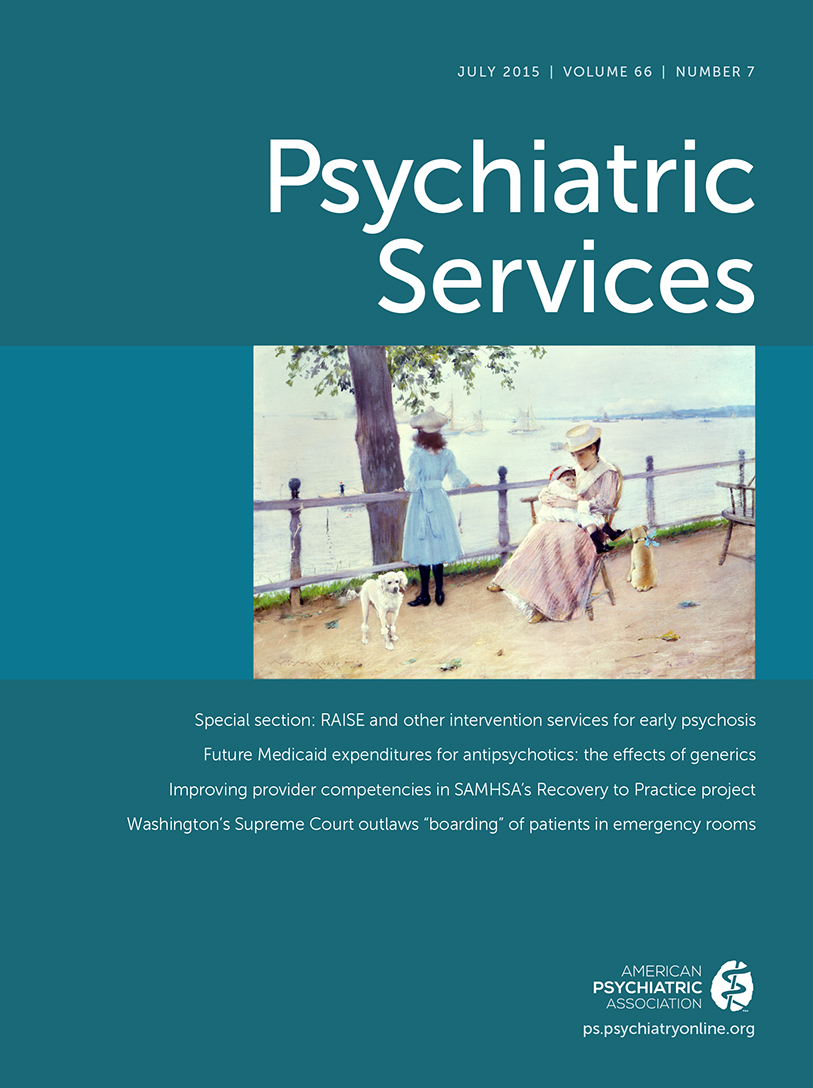Technology Access and Use Among Young Adults With a First Episode of Psychosis
TO THE EDITOR: It is increasingly recognized that the Internet, social media, and mobile technologies can complement, augment, or extend mental health care (1) and enhance service engagement, particularly among young people (2). Understanding how young people receiving psychiatric services access and use these technologies can inform the development or uptake of technology-enabled mental health interventions and supports. Toward this end, we recently conducted an in-person survey among young adults receiving specialized services for a first episode of psychosis (FEP) about their access and use of such technologies. Participants were recruited from two programs: the Prevention and Early Intervention Program for Psychosis at the Douglas Mental Health University Institute and the Prevention and Early Intervention Program for Psychosis at McGill University Health Centre. Between December 2013 and October 2014, a total of 67 individuals (mean±SD age=25.6±5.1) completed the survey, which was developed in collaboration with young adult service users and mental health clinicians. The Ethics Review Board at McGill University provided approval, and all participants provided consent.
The majority of participants had access to a cell phone (N=59, 88%), most of which were smartphones. Most (N=47, 70%) had access to a laptop computer, and a little over half (N=35, 52%) had access to a desktop computer in their home. Only some (N=11, 16%) owned a tablet, whereas several (N=27, 40%) owned an MP3 player (for example, an iPod). In descending order, the ten most popular reported uses of these devices among a list of possible activities were listening to music, watching videos, e-mailing, searching for information, social networking, text messaging, taking pictures, using maps, playing games, and banking. The five most popular types of information searched online in the past year among a list of topics were news, work, transportation, school, and mental health. The three most commonly visited social media sites were YouTube (N=63, 94%), Facebook (N=50, 75%), and Skype (N=30, 45%).
Many participants were active users of social media, particularly YouTube and Facebook, highlighting the importance of leveraging social media in the context of mental health services. Yet, at the time of the study, neither of the recruitment sites had a social media presence. It is also noteworthy that a portion of cell phone users (N=13, 19%) did not have a smartphone that would provide them with access to the Internet and the use of apps; moreover, a few participants (N=8, 12%) did not have access to any type of cell phone.
To our knowledge, this is the first reported survey on access to and use of technology among young adults receiving FEP services. A larger sample would help us better understand how access and use varies in relation to gender, age, socioeconomic characteristics, and geographical settings. As the trend toward technology-enabled mental health service delivery is increasing, it is important to understand youths’ preferences and priorities. For example, knowledge of the types and features of technology-enabled services that youths would find engaging and be amenable to receiving (for example, peer support, medication reminders, online counseling, and management of personal mental health information) can help prioritize efforts to develop, implement, and evaluate new technologies and online strategies.
1 : E-mental health: a rapid review of the literature. Psychiatric Services 65:24–32, 2014Link, Google Scholar
2 : Service engagement in first episode psychosis: current issues and future directions. Canadian Journal of Psychiatry, in pressGoogle Scholar



